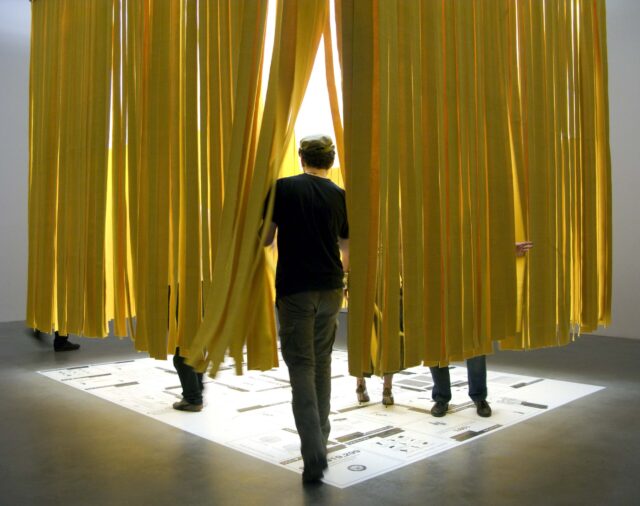Project_ was invited by Francesco Bonami and the Fondazione Sandretto de Rebaudengo in Torino to contribute a prison cell design to their YouPrison exhibit, together with twelve other international architects. After researching reform ideas within the U.S. prison system, prison labor laws, as well as the actual architectural implications of a cell redesign, we decided to dedicate our exhibition to explicating the dilemma that a designer finds himself in when asked to impact (through the design of a room) a system determined by agents and agencies well beyond any architect’s domain.
As a direct result of recent legislation and of the general cultural embrace of “cleaning up” and normalizing American cities, the number of individuals in U.S. prisons has been steadily increasing, which has brought clear financial benefit to private prison management companies over the last decade. The interior of U.S. prisons is also one of the last sites of production in an otherwise post-industrial economy. None of this is to say that prisons do not involve architectural design – on the contrary, prison architectures often survive the governments that sponsor them – but rather, to begin to describe the intricate and vast network of agents involved in the shaping of the U.S. correctional system in order to understand what possible agency an architect might have in this situation. Not only is the contemporary architect not the same figure as the eighteenth century reformer/architect, but the cell is in fact too small a unit of carceral space to impact the deeply problematic structures and practices that extend well beyond it today.
The floor of our installation is an informational display that requires the visitor to perform our research and our dilemma spatially. Three main voices are reconstructed: the voice of the legislature and governmental agencies, the voice of all who benefit from the prison system financially, and the voice of the prisoners. Each of these agents spins the information in specific ideological directions. Although it may be possible to care about only one of these larger agents, the connections between them are intricate, inextricably woven together, and, most importantly, entangle the figure of the architect as well.
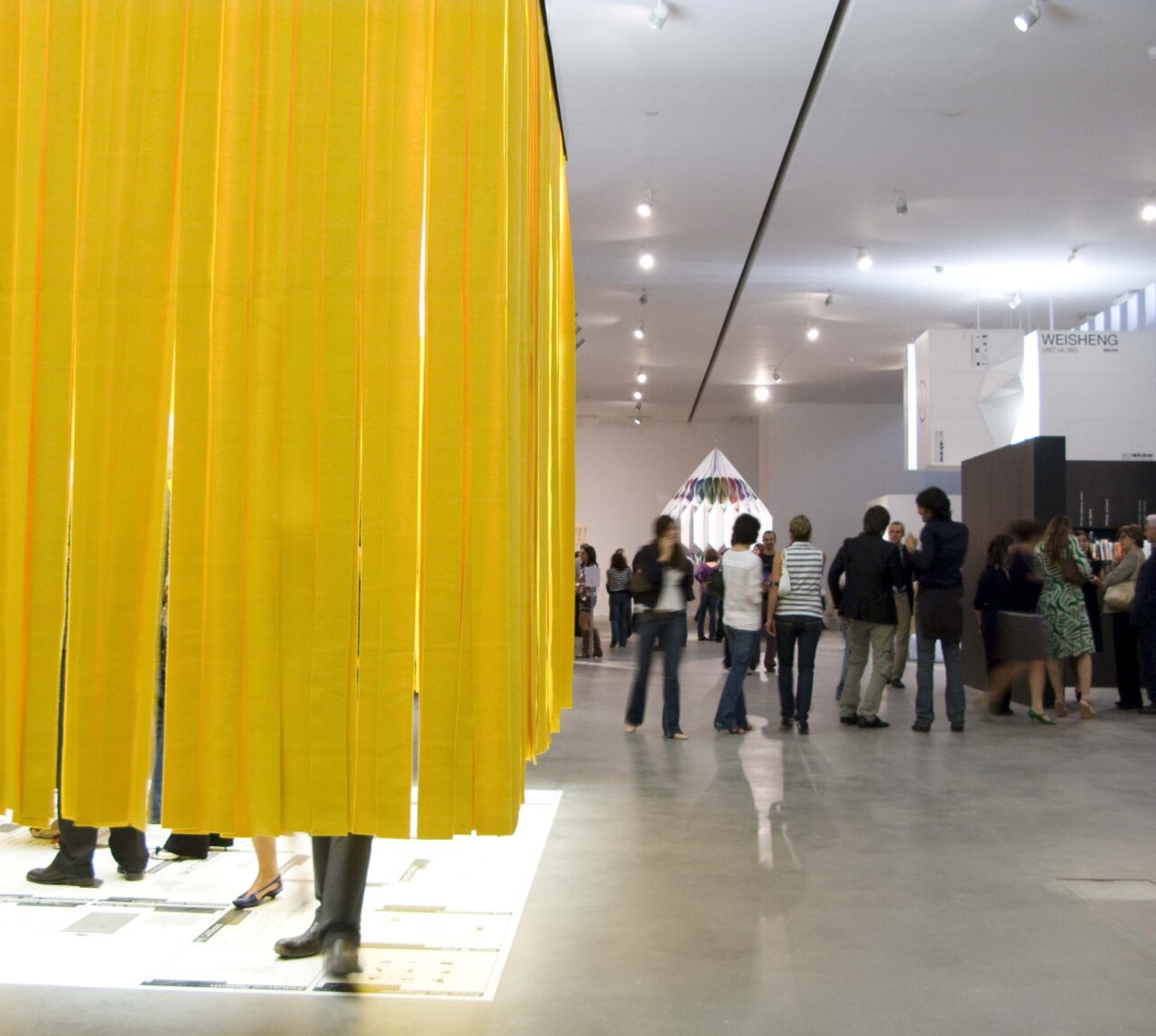
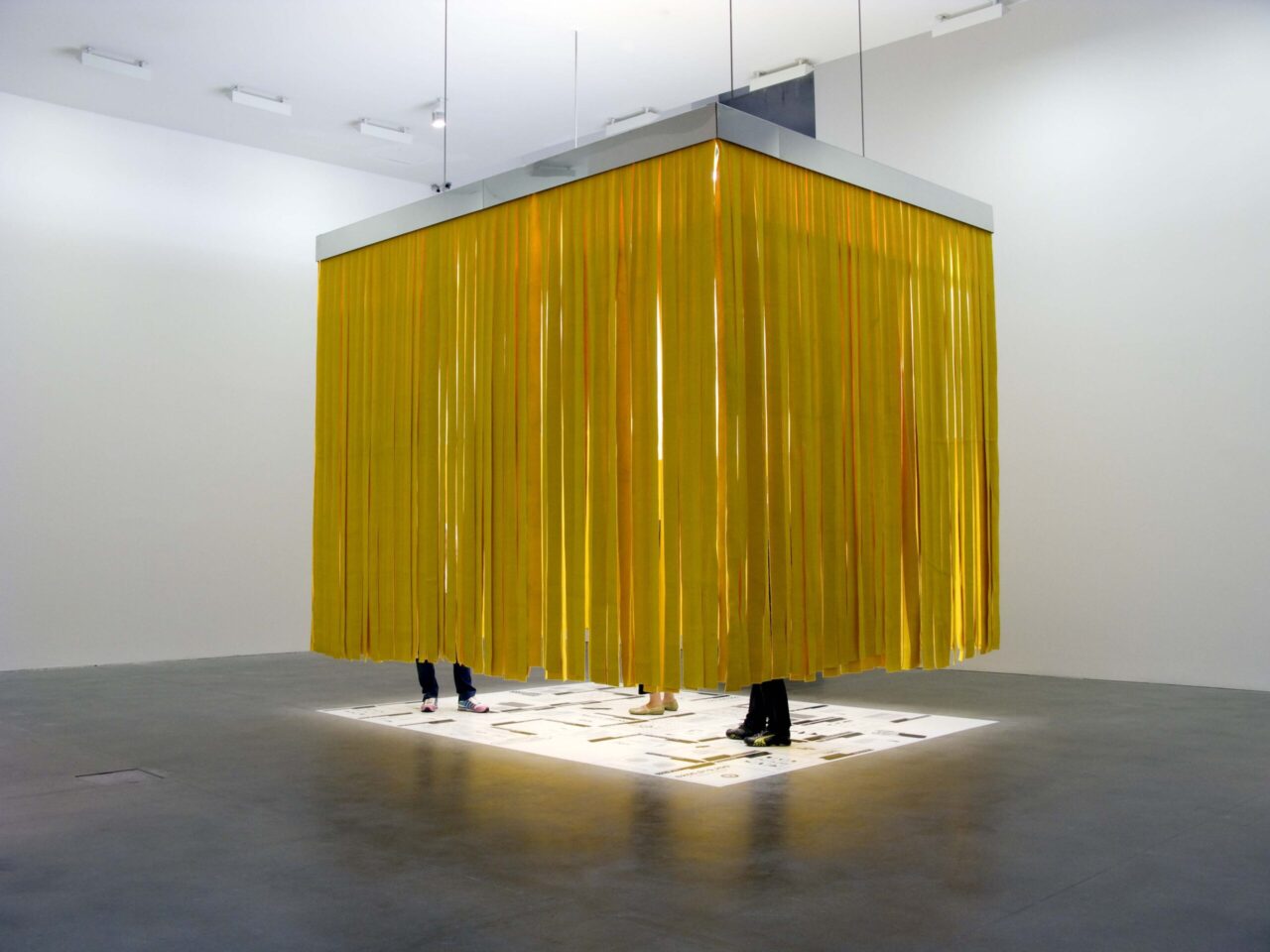
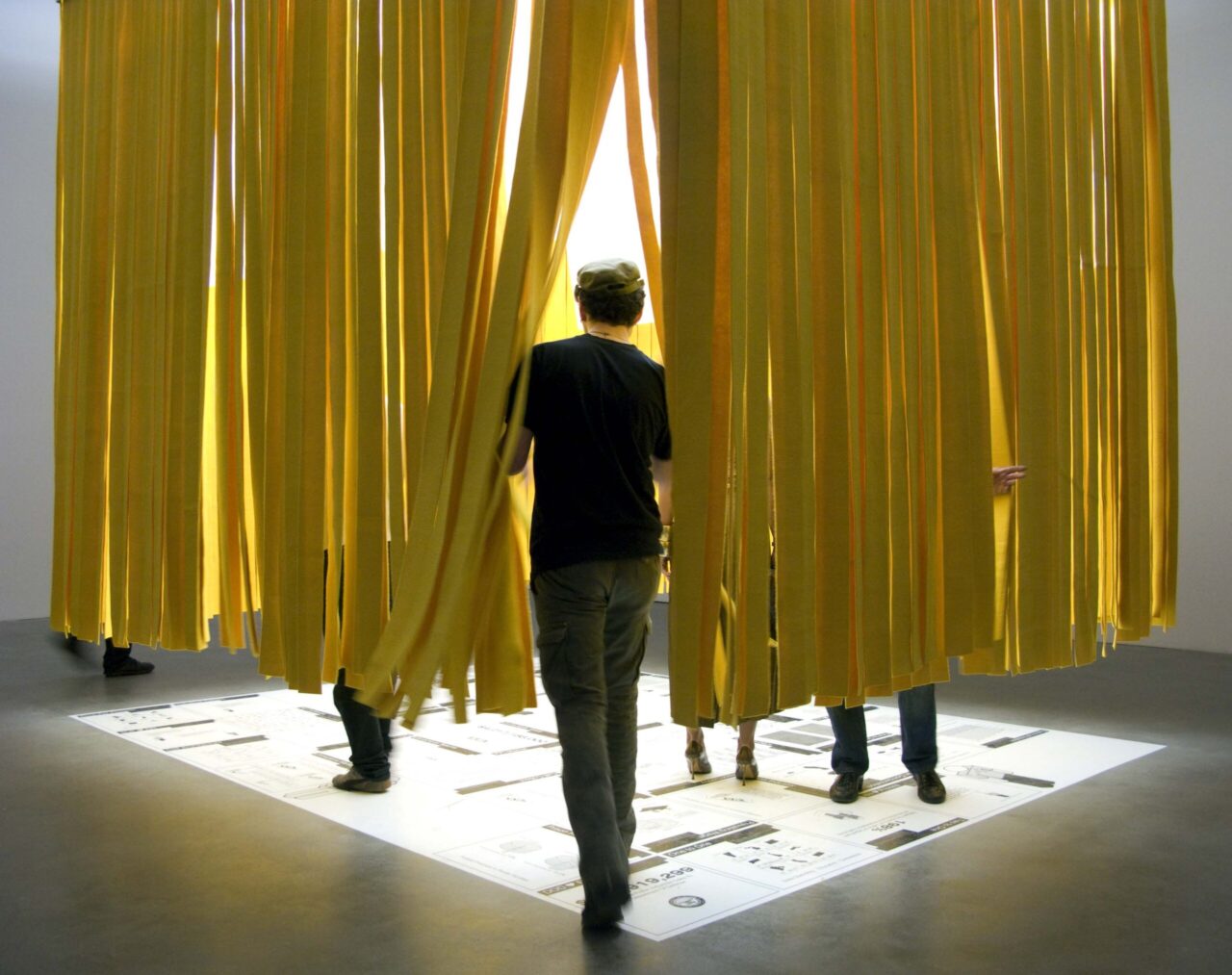


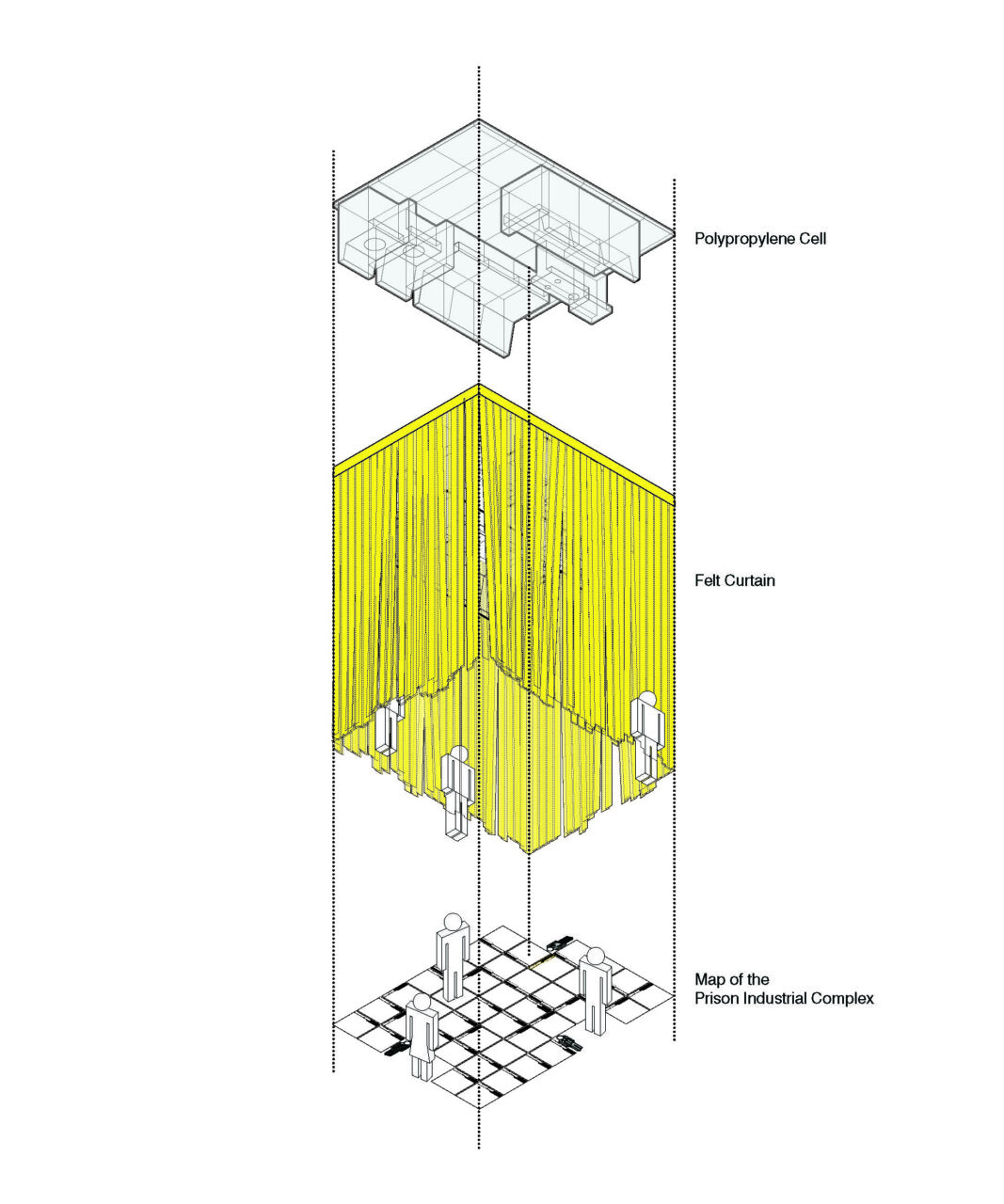
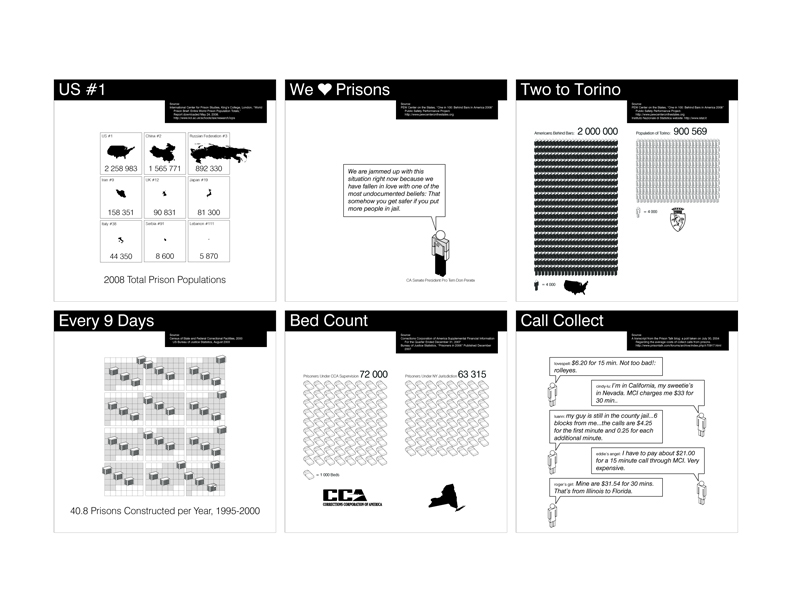
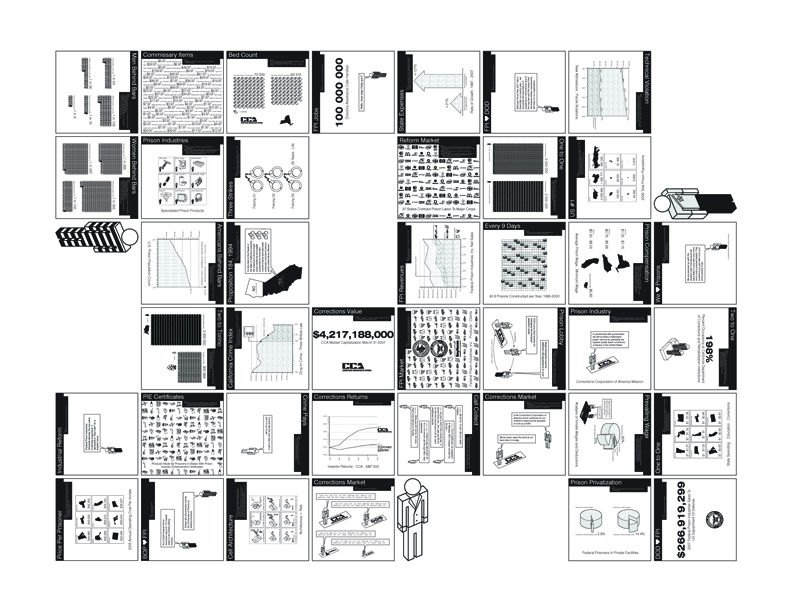
Project Team:
Ana Miljački / Project_
Lee Moreau / Project_
Dan Sakai
Ben Porto
